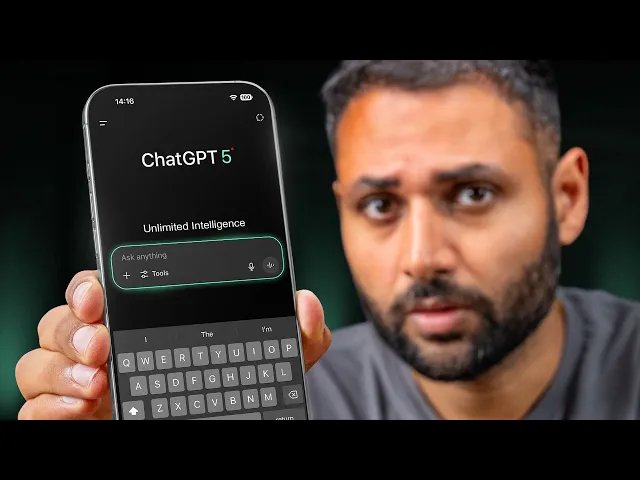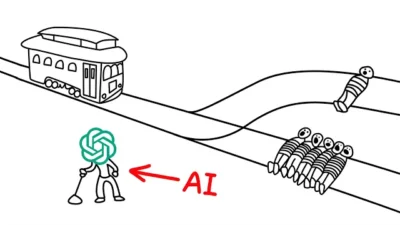Overview
OpenAI has rolled out GPT-5, the latest evolution of its AI chatbot technology, now available as the default model for all ChatGPT users, including free users. In this detailed breakdown, we explore how GPT-5 stacks up against previous iterations like GPT-4 and its variants, examining performance, usability, code generation, creativity, and trustworthiness. Whether you’re a developer, content creator, or just someone curious about AI, this post helps you understand what makes GPT-5 significant—and where it still needs improvement.
Speed and Performance Enhancements
The first noticeable improvement with GPT-5 is its speed. In side-by-side tests on simple factual queries like “How many rings does Saturn have?” GPT-5 clocked in significantly faster than GPT-4, with roughly 30–50% performance gains. Here’s a quick comparison:
- “How many rings does Saturn have?” GPT-5: 3.1 seconds vs GPT-4: 6.5 seconds
- “How many iPhone models has Apple made?” GPT-5: 8.3 seconds vs GPT-4: 11.2 seconds
- “How many possible type combinations exist in Pokémon?” GPT-5: 5 seconds vs GPT-4: 11 seconds
While speed wasn’t previously a major issue for basic queries, the improvement enhances user experience and sets the tone for GPT-5’s core competency—efficiency.
Unified Intelligence Model
One of GPT-5’s biggest usability wins is the consolidation of previously distinct AI models into a single unified system. In GPT-4 and earlier, users had to manually pick between different models such as GPT-4, GPT-4 Mini High, and GPT-3.5, depending on their needs—coding, reasoning, or lightweight interactions. With GPT-5, the AI dynamically adjusts its cognitive load based on the task, saving users from the complexity of choosing the right model.
This improvement not only simplifies the interface but makes the user experience seamless—whether you’re generating basic answers or asking for complex coding tasks, GPT-5 adapts on the fly.
Advanced Code Generation: A Leap Forward
To test code generation, several prompts were given across different models, including a playable Tetris game written in HTML5 Canvas and a themed chess game with Pokémon sprites. Results showed:
- GPT-4 took 57 seconds to deliver a functional but basic game of Tetris.
- GPT-4 Mini High was faster (14 seconds) but produced similar results.
- GPT-5 completed the task in 19 seconds and produced a more visually enhanced and feature-rich version.
In the Pokémon chess game prompt, GPT-5 not only succeeded in resolving errors encountered in GPT-4 Mini High but added enhanced logic, game mechanics, and premium aesthetic design. This suggests GPT-5 understands both functional and experiential elements of coding tasks better than its predecessors.
Accuracy and Reliability: A Mixed Bag
One of the major pain points in past models has been “hallucination”—the AI confidently asserting incorrect information. Testing GPT-5 with prompts that used to trip up ChatGPT, such as “tech products made by food brands,” shows only minor improvements. GPT-5 still listed fictitious products with high confidence, indicating that while the framework is smarter, factual groundedness remains a challenge.
For context-based responses like identifying itself when asked an oddly phrased question, GPT-5 demonstrated stronger comprehension, correctly inferring user intent and providing clearer, more human-like answers.
Creativity and Content Creation
GPT-5 was tested for creative flexibility with tasks like thumbnail design and copywriting:
- YouTube Thumbnail: Despite significant improvements in coding, GPT-5 underperformed in image generation with poorer composition and incorrect aspect ratios compared to GPT-4.
- Event Invitation: GPT-4 produced a stylish Star Wars-themed invite featuring Darth Vader in a formal suit, while GPT-5’s version felt lacking in creativity and design effort.
- Scriptwriting: When asked to create a short video about the Windows phone saga, GPT-5 produced a more engaging narrative complete with filming suggestions and storytelling flair. GPT-4, while accurate, felt flat and overly technical.
This indicates that while GPT-5 still misses the mark on some visual tasks, it excels in written content—employing wit, emotion, and structure that resonates with human sensibilities.
What Free Users Need to Know
One of the perks of the GPT-5 rollout is that even free-tier users now have access (with limitations). You’re allowed 8 to 10 requests per day using GPT-5’s full capabilities, after which you’ll switch to a lightweight version, GPT-5 Mini. This setup offers a better-than-before experience even without a subscription, making premium capabilities slightly more accessible to general users.
Conclusion: Is GPT-5 the Upgrade We Were Waiting For?
GPT-5 marks a substantial leap in terms of unified intelligence, faster processing, and better creative writing capability. It removes the guesswork of model selection and packages prior specialization into one robust platform. However, it’s not all perfect—image generation and factual accuracy still have noticeable room for improvement.
That said, GPT-5 doesn’t just feel like a smarter tool; it feels like a more intuitive one. Whether you’re coding, writing scripts, or just asking quirky questions, GPT-5 simplifies complex tasks and adds a touch of intelligence that aligns better with human intent. While not flawless, it’s a step in the right direction—and a big one at that.
Note: This blog is written and based on a YouTube video. Orignal creator video below:





